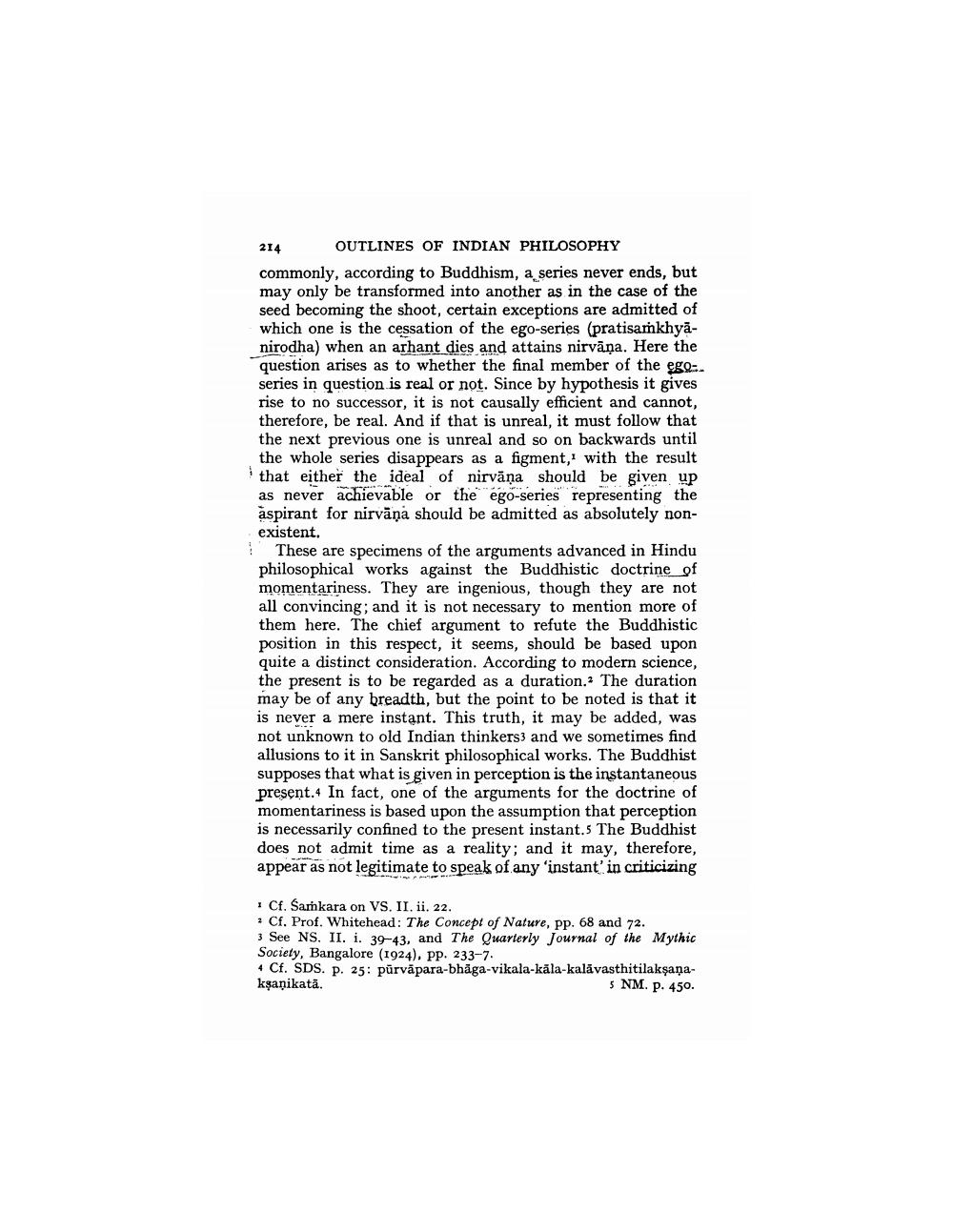________________
214 OUTLINES OF INDIAN PHILOSOPHY commonly, according to Buddhism, a series never ends, but may only be transformed into another as in the case of the seed becoming the shoot, certain exceptions are admitted of which one is the cessation of the ego-series (pratisamkhyānirodha) when an arhant dies and attains nirvāņa. Here the question arises as to whether the final member of the ego.. series in question is real or not. Since by hypothesis it gives rise to no successor, it is not causally efficient and cannot, therefore, be real. And if that is unreal, it must follow that the next previous one is unreal and so on backwards until the whole series disappears as a figment, with the result that either the ideal of nirvāņa should be given up as never achievable or the ego-series representing the aspirant for nirvāņa should be admitted as absolutely nonexistent.
These are specimens of the arguments advanced in Hindu philosophical works against the Buddhistic doctrine of momentariness. They are ingenious, though they are not all convincing; and it is not necessary to mention more of them here. The chief argument to refute the Buddhistic position in this respect, it seems, should be based upon quite a distinct consideration. According to modern science, the present is to be regarded as a duration. The duration may be of any breadth, but the point to be noted is that it is never a mere instant. This truth, it may be added, was not unknown to old Indian thinkers and we sometimes find allusions to it in Sanskrit philosophical works. The Buddhist supposes that what is given in perception is the instantaneous present. In fact, one of the arguments for the doctrine of momentariness is based upon the assumption that perception is necessarily confined to the present instant.5 The Buddhist does not admit time as a reality, and it may, therefore, appear as not legitimate to speak of any 'instant' in criticizing
1 Cf. Samkara on VS. II. ii. 22. * Cf. Prof. Whitehead: The Concept of Nature, pp. 68 and 72. 3 See NS. II. I. 39-43, and The Quarterly Journal of the Mythic Society, Bangalore (1924). Pp. 233-7. 4 Cf. SDS. p. 25: purvā para-bhāga-vikala-kala-kalavasthitilaksanakşaņikatā.
5 NM. p. 450.




